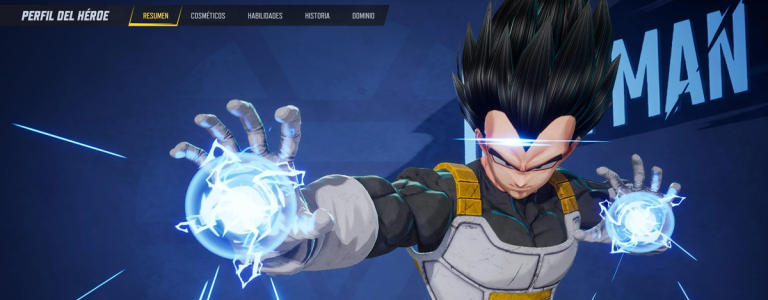As we’ve all heard countless times throughout these last 12 months, 2023 has been a very interesting year in gaming. There were an exorbitant amount of layoffs, companies gobbling up other companies like corporate Pac-Man, and leaks galore. But despite the obvious problems within our industry that 2023 unmasked, it was a massive year when it came to the sheer quantity and quality of games on offer.
When it came time to start deliberating on Kotaku’s Game of the Year (GOTY) list, I was understandably nervous. There were so many damn games that the initial list was daunting, and the math involved to narrow everything down was a harsh reminder that I am, indeed, very bad with numbers. I double- and triple-checked it all, I sent kind-but-firm reminders to Kotaku staff to get their votes in, and after a few weeks, the list was born.
Read More: 2023 Is The Best Year For Games In A While
Is this year’s list surprising? No, not really. Blockbuster games were dropping all throughout the year, from the Resident Evil 4 Remake in March, to Star Wars Jedi: Survivor in April, Tears of the Kingdom in May, and Baldur’s Gate 3 in August. Hell, even Cyberpunk 2077 finally lived up to expectations with its Phantom Liberty expansion and massive patch. So, no, the content of this year’s list will not surprise you—though its order might, and the fact that we expanded the list to 12 rather than last year’s ten.
So, let’s check out Kotaku’s best games of 2023. I await your arguments in the comments.
12. Resident Evil 4 remake
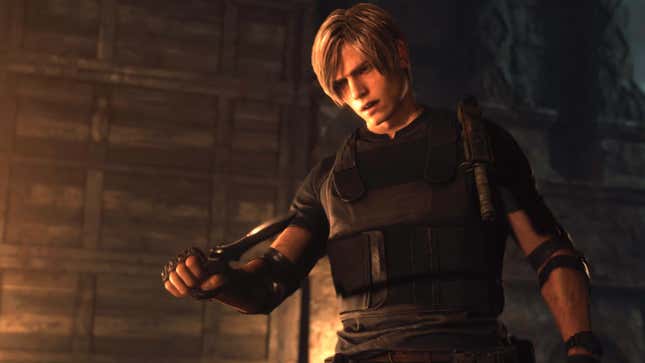
Part of me feels weird claiming a remake is one of the year’s best games. It’s even weirder for me as I was firmly against the idea of remaking Resident Evil 4. But the Resident Evil 4 remake is special. It’s a game worth playing, even if you have never touched a previous Resident Evil title, including the original RE4 (and all its various ports). It balances tense and challenging combat with slower moments that ratchet up the tension and let you explore its gorgeously detailed and spooky world.
Yes, some surprises aren’t that surprising if you’ve played the original game. But Capcom went the extra mile and tweaked areas, encounters, and other moments just enough that as a veteran player, I found myself frequently unsure of what was going to happen next. Most of these changes to gameplay, like making the knife more useful, feel thoughtful and deliberate, not just the result of developers trying to make something old feel new in 2023.
Before this remake, people would often ask if there was a point to remaking RE4, as it is such a fantastic game already, even 18 years after its release. It didn’t seem like a worthwhile endeavor, especially when there are other entries in the franchise that deserve some love. But after playing the remake, it’s clear that Capcom didn’t simply want to “up res” the old game and resell it (again). Instead, the studio put in the work and time and crafted a standalone horror masterpiece that will go on to be as beloved and well-regarded as the original, even surpassing it in many ways. So I guess I’m glad I was wrong about it.
Zack Zwiezen, staff writer
11. Marvel’s Spider-Man 2
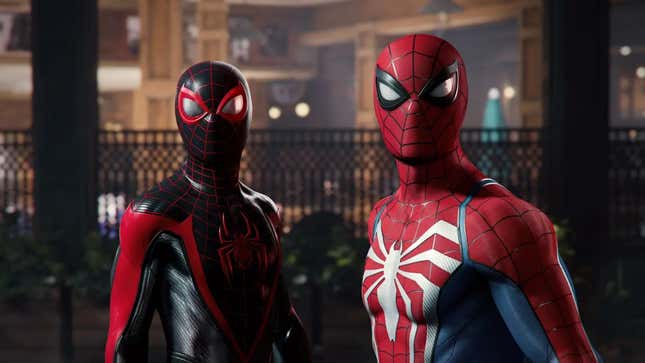
Spider-Man 2 asks the question: what if the original Spider-Man, but bigger, bolder, and better? Insomniac smartly takes the winning formula from the 2018 action-adventure game and adds a few dashes of extra essence, offering an even-more-detailed Manhattan (plus new ways to traverse it), the ability to swap between Peter Parker and Miles Morales with ease, and some new bad guys you’ll have to contend with. From beginning to end, Spider-Man 2 offers an uninterrupted drip of gamer serotonin.
Sure, it’s not the kind of game that will be lauded for its ingenuity, nor is it the kind that would have won Game of the Year at this year’s Game Awards when facing titans like Baldur’s Gate 3 and Alan Wake II, but that doesn’t mean it’s not a fantastic experience. Spider-Man 2 is a beautifully polished, well-oiled machine, like a 2024 luxury car that looks, mostly, like the one that came the year before it. Just like that luxury vehicle, it’ll impress you with its shiny exterior and impressive handling, and constantly remind you that it is, in fact, a luxury experience. It’s the kind of game you can effortlessly jump into and mess around in for a few solid hours without breaking a mental or physical sweat, a joyously exuberant and bright game that other superhero titles could only ever hope to be.
Alyssa Mercante, senior editor
10. Dave the Diver

Indie or not, Dave the Diver deserves your attention as one of the year’s best games. The adventure offers an engrossing, surprising, and satisfying gameplay loop you can easily get lost in. With a million copies sold in its first month, it’s fair to say the diving simulator made a real splash (sorry that will be the only one) this year.
Developer Mintrocket’s pixel-based adventure is a slippery moray eel to sum up into an elevator pitch but I’ll give it a go. As Dave, you deep-sea dive for fish by day, supplying the ingredients for an ocean-front sushi restaurant that you operate when night rolls around. As the business grows, there’s staff to hire, pints to pour, social media to manage, and new equipment to buy for reaching greater depths. There’s too much to Dave than may be reasonably contained in this blurbm and I haven’t even delved into the seahorse-racing meta yet!
John Walker, in his write-up for the site, highlights what makes Dave special, calling it:
“…a game that will not stop getting bigger, more interesting, and perhaps most importantly, more outright bonkers. Introducing new features like other games introduce loading screens, DTD evolves continuously.”
It’s precisely that ever-evolving loop that promises to keep me coming back to hang with my Bancho Sushi squad well into 2024. What’s more, with a recent port to the Switch and the announcement of a free DLC collaboration with Dredge, another fishing sim that Kotaku scoped out this year, it’s a great time to dive into Dave.
Eric Schulkin, video lead
9. Cyberpunk 2077: Phantom Liberty
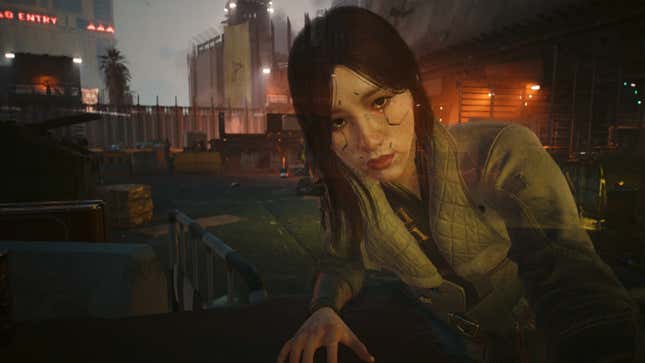
Phantom Liberty is the final chapter in Cyberpunk 2077‘s comeback story. It’s wild how selling millions of copies of a dumpster fire gives you the time and resources to completely gut and reshape it into something that is beyond merely playable, huh?
Though talk of Cyberpunk 2077‘s inherent value underneath the launch bugs was, in my opinion, greatly exaggerated, the sweeping systemic changes introduced by the Phantom Liberty expansion show that there was always potential for it to be great. The DLC’s spy thriller narrative feels distinct from the main story, and the 2.0 update brings heaps of replayability to what was once a somewhat unplayable title.
It’s certainly not an underdog story, as the game sold 25 million copies, but Phantom Liberty is a shining example of what happens when a studio of talented developers is given a second chance to fix what was made under a tight deadline. Cyberpunk 2077 is now a phoenix rising from its self-created ashes, and nothing embodies the roller coaster ride we’ve been on like Phantom Liberty.
Kenneth Shepard, staff writer
8. Star Wars Jedi: Survivor
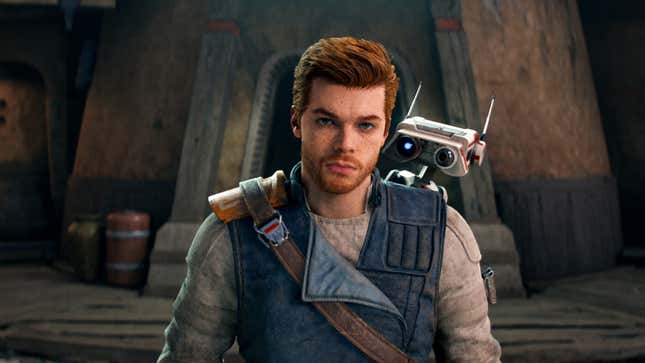
There sure is a lot of Star Wars in 2023, huh? Too much? Maybe. But if we were making a pile of Star Wars stuff and sorting it all out, at the top of this year’s heap would be Respawn’s amazing sequel, Star Wars Jedi: Survivor.
Mixing Dark Souls-like gameplay with the Star Wars universe sounds good on paper, but there are so many ways this could have gone wrong. The game could have been too hard, too focused on copying the Soulslike-formula, or too obsessed with the most obscure Star Wars lore, leaving non-fans confused. However, Respawn was able to pull it off, delivering an action-packed Star Wars adventure that had enough heart and dramatic moments to stand toe-to-toe with any of the recent films, and even win over some folks who were done with the franchise.
These days, in an era when it feels like games are getting longer and bigger every year, it’s rare that I end a game and feel sad that there isn’t more. Often, I’m happy to reach the credits and move on after slogging through 100 hours of whatever I was doing. But that wasn’t the case with Survivor. I wanted another planet to explore. More puzzles to solve. More Star Wars lore to poke through. And more enemies to rip apart with my various lightsaber blades in all their wonderful colors.
Sure, there might be too much Star Wars in our galaxy these days, but if more of it is as good as this, well, then I’m down for another sequel from Respawn. I mean, come on, the best Star Wars stories always come in trilogies, right?
ZZ
7. Diablo IV

Blizzard’s latest entry in its long-running action-RPG franchise might not have the perfect endgame or offer the kind of seasonal updates that fans want. But to me, that stuff isn’t as important as the actual main game, which I played all the way through twice this year.
Diablo IV doesn’t change up the franchise’s formula all that much as developer Blizzard knows that Diablo’s gameplay is hard to improve on. However, after fans complained about Diablo 3’s narrative and tone, Blizzard saw an opportunity to craft a sequel that felt more like the gothic and dark original games, and the results are obvious in IV. There are some genuinely great quests throughout this game, and some cutscenes that will stick in my memory for years to come.
And yes, in 2023, it is still fun to run through a giant pack of monsters, pop a few big spells and abilities, and watch them all evaporate in a glorious explosion of particles. It’s even better when all the blood and dust have settled and you’ve found a few nice pieces of new loot to pick up out of all the viscera. Diablo IV nails that experience, delivering it over and over and over again and activating a part of our lizard brains that few games can.
Yes, the updates and endgame content have been a frustrating roller coaster, but the core game is fantastic, one of the best in 2023, and if Blizzard can nail future updates and expansions, it might end up being a game I put a lot of time into in 2024 and beyond.
ZZ
6. Super Mario Bros. Wonder
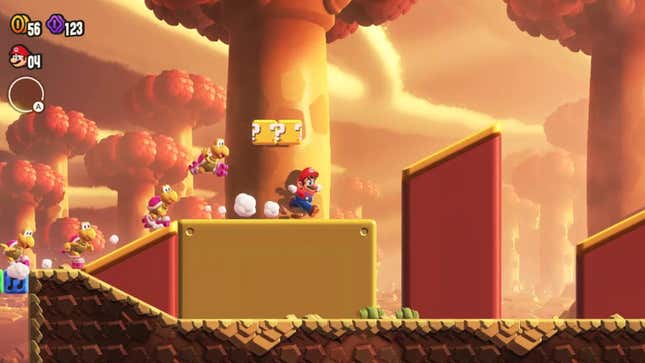
Game enjoyers of a certain vintage (old) will no doubt remember “the boot level” of Super Mario Bros. 3. Most Mario power-ups are available in multiple levels, like the Super Leaf or the Fire Flower. Some are more rare, like the Tanooki and Frog Suits that you only stumble upon every once in a while. But the boot, canonically known as Kuribo’s Shoe, appears in exactly one stage in the entire game: World 5, Level 3.
Super Mario Bros. Wonder feels like the development team said, what if we made every level the boot level? Each individual stage has its own unique gimmick—and often two, thanks to the way the game’s hallmark Wonder Seeds allow for an alternate route to completing the level. You can swim through the sky in rivers of torrential rain, transform into a blob to move effortlessly through bricks of slime, and bounce along a rainbow of musical notes as Piranha Plants vibe to the beat. It is impossible to play this game without a big goofy smile on your face.
All five of the developers behind the original Super Mario Bros. in 1985 (yes, there were only five of them) were involved in the creation of Super Mario Bros. Wonder. Experiencing their wildly inventive riffs on the genre they created nearly 40 years ago is truly an experience to savor.
Jen Glennon, editor-in-chief
5. Armored Core VI
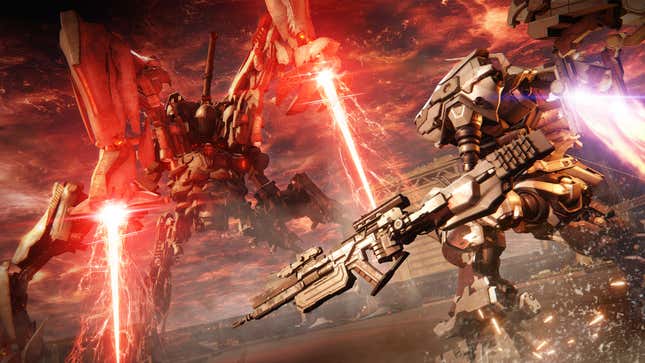
FromSoftware’s latest mech shooter revels in the nitty-gritty details fans of the sci-fi series have championed for years, while streamlining much of the experience and including lessons learned from a decade of critically acclaimed Soulsborne experimentation. The result is a fast-paced action game in a captivating future-scape with deep customization and unforgettable boss fights. Armored Core VI successfully sands off some of the infamously opaque franchise’s rough edges without sacrificing its steely soul.
It refreshingly dispenses with so much of the ancillary time wasters that tend to pad modern blockbusters, buckling under the weight of absurd budgets and ridiculous sales expectations, whether it benefits them or not. There’s no XP to grind, randomized loot to earn, or lists of junk to collect and craft. There sure as hell isn’t a battle pass. There’s just an arsenal of unlockable gear, a loading bay where you fine-tune your mech’s build, and arcade-style bit-sized missions that crescendo from breezy demolition-fests to brutal showdowns that reward experimentation and the patience to hone your skills.
Where other games try to be everything to everyone, Armored Core VI’s doesn’t dabble in extraneous nonsense. Dialogue is sparse but meaningful and linear missions capitalize on that short leash to take you on a carefully guided tour through a corporate-sponsored apocalypse. None of these things is revolutionary on its own, but the precision and polish with which they’re executed in the year 2023 is notable and feels exhilarating. Austerity can be liberating, and Armored Core VI is an exercise in cutting through the bullshit with a giant laser sword and looking cool-as-hell while doing it.
Ethan Gach, senior reporter
4. Street Fighter 6
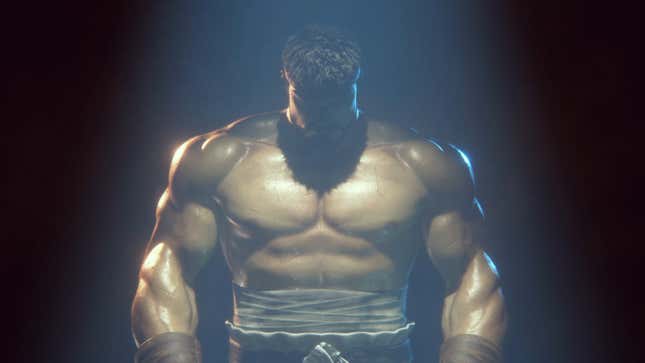
Street Fighter 6 is a sublime example of how iteration is at the core of fighting game design. Street Fighter V came out in a rough state, though by the time Capcom ended support for it in 2022, it had come around somewhat. But Capcom didn’t make the same mistake with Street Fighter 6, which has come out the gate swinging.
Street Fighter 6 excels in its ability to make all its fighters feel whole again. It rounds out each of their movesets with universal mechanics like the Drive Gauge, which puts everyone on an equal offensive and defensive footing. And the World Tour mode expands upon each of their characters in incredibly endearing ways, like letting you fail to thirst-text Ryu, who is technologically illiterate, or revealing that Dhalsim isn’t allowed to play baseball anymore because his stretchy legs are considered an unfair advantage.
Not too long ago, Street Fighter felt like it was losing touch with why fighting games have become such a communal cultural phenomenon. Street Fighter 6 is a reminder that for as complex as they can be, fighting games are for everyone.
KS
3. Baldur’s Gate 3
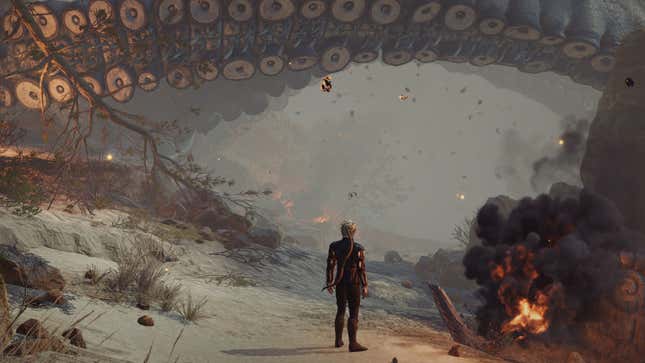
Baldur’s Gate 3, Larian Studios’ Dungeons & Dragons RPG, is immaculately designed, allowing for forms of expression across character customization, battle tactics, and roleplaying that most games of its scale can’t even dream of. Its cast has quickly become one of the most beloved in the past decade of RPG parties.
Baldur’s Gate 3 may not have won Kotaku’s Game of the Year (I’m not bitter! Pinky promise!), but it is, perhaps, one of the most important ones on this list. It’s a testament to the passion and talent of the people who made it, and a reminder that when games are given the time and resources to create something this bold and reactive, it gives everyone who plays it an experience that is all their own.
The video game industry is at a crisis point, with thousands of jobs lost in 2023 alone and more likely to come in the future. Baldur’s Gate 3, despite coming out this year, feels like a relic of a bygone era where games were complete at launch, post-launch updates were substantial and somehow still free, and the player feedback has been heard and applied. Larian has built up so much goodwill in just a few short months since launch that even if it were to stop updating BG3 tomorrow, it would still stand as a symbol of what games can be, and a sad reminder that they rarely make them like this anymore.
KS
2. The Legend of Zelda: Tears of the Kingdom
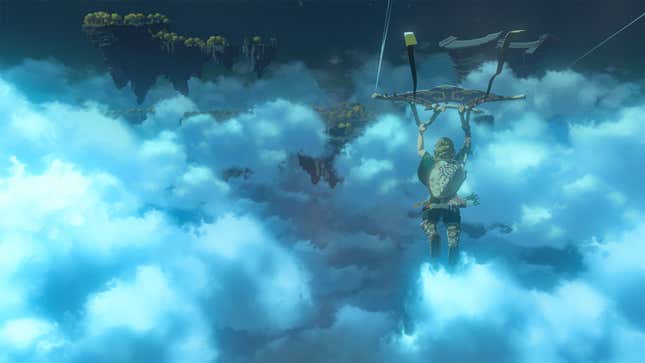
I was wary of Tears of the Kingdom in the weeks leading up to its release. After years and years of stagnation in its signature fantasy series, Nintendo had finally saved Zelda with 2017’s Breath of the Wild, a game that had, in one fell swoop, blown off all the dust that had accumulated on the franchise and given it new, exhilarating life. However, everything Nintendo showed of Tears of the Kingdom prior to its launch left me worried that we were about to get another safe sequel, BotW 1.5, rather than something worthy of the series’ spirit of adventure.
How wrong I was to worry. Nintendo kept TotK’s biggest surprises mostly under wraps, letting us discover the unnerving vastness of Hyrule’s new subterranean depths for ourselves, as well as just how game-changing its grand new assortment of abilities really are. Sure, ultrahand—the new power that lets hero Link fashion all manner of useful contraptions from the world’s resources—may enable those with real arts-and-crafts aplomb to create some truly amazing things. But the brilliance of Tears of the Kingdom’s design lies in how even players like me, who typically feel intimidated when games force us to be engineers, can fumble our way to our own wonky solutions and, maybe sometimes, even manage to design something pretty cool ourselves.
Read More: Nintendo Is Trying To Patent Some Really Broad Tears Of The Kingdom Mechanics
Part of what made Breath of the Wild so extraordinary was that Hyrule was elevated to the role of central character. Zelda may still be in the game’s title but the core relationship of the game was between Link and the world you explore, a world you really feel as you so rarely feel the world in games—its rough terrain under your feet, its steep cliffs under your climbing, grasping hands. Tears of the Kingdom makes this relationship even deeper as abilities like ultrahand and ascend give you new ways of relating to and interacting with the world, enriching your relationship with the terrain and what it offers you. This relationship, and the ways in which these abilities enhance it, are both deeply meaningful and, in the best and truest sense, genuinely playful, allowing freedom, imagination, and creativity to flourish. Tears of the Kingdom is Nintendo building a masterpiece on top of a masterpiece, demonstrating once again that fresh, innovative ideas can make familiar franchises feel thrillingly new again.
Carolyn Petit, managing editor
1. Alan Wake II
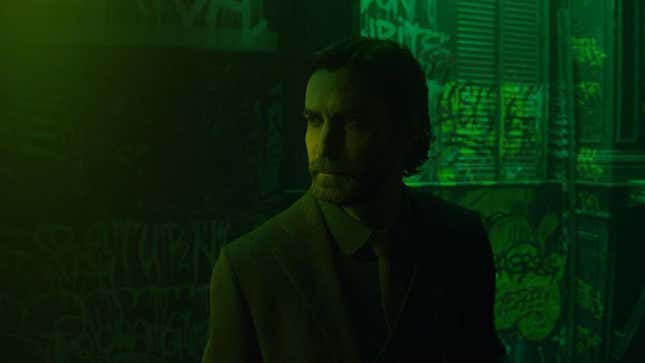
Alan Wake II rekindled a feeling for me that I once experienced fairly often but that I’ve rarely encountered in big-budget games of late: the feeling of playing something truly, wholly original. That’s not to say that games today are worse than they used to be, but simply to say that, as certain concepts and systems have grown more standardized and commonplace, they often feel familiar and comforting right from the start. One open world can feel much like another, one game’s progression systems or skill trees much like those we’ve seen many times before. Leave it to Remedy, though—a studio that has stayed fresh and idiosyncratic since leaving its first indelible mark on games with 2001’s Max Payne—to immerse us in a game of uncompromising originality.
It’s been 13 years since the original Alan Wake. Starring a writer of crime books who’s grappled with a terrible writer’s block after leaving his old protagonist, hard-boiled detective Alex Casey, behind, it felt borne out of Remedy creative director Sam Lake’s struggles to find a new creative direction following 2003’s Max Payne 2. Alan Wake was fascinating—a moody, atmospheric adventure that dared to give us a prickly, sometimes unlikeable hero—but for all of its heady ideas, it felt somehow restrained and safe, a game about horror that didn’t delve into horror itself.
Read More: Alan Wake Creator Says Sequel Is ‘More Intense, More Brutal’
Alan Wake II, by contrast, is exhilaratingly, unrelentingly bold, as if bursting with 13 years’ worth of repressed creative energy. Daring in its structure, narratively unhinged, and jam-packed with thrilling uses of live action that brilliantly contribute to the sense that Alan (and you) are slipping between different layers of consciousness and existence, it’s a surreal odyssey that playfully weaves Remedy’s entire history into a tale about how the things we create can liberate us, or keep us trapped. In a year bursting with excitingly original games, Alan Wake II stands tall as the boldest, most invigorating reminder of what games can do when they hold unwaveringly true to a singular artistic vision, making it Kotaku’s 2023 Game of the Year.
CP
So there you have it, Kotaku’s 12 best games of 2023, ranked. What do you think of the list? Let us know in the comments—who are we kidding, we know you will without us telling you.





















